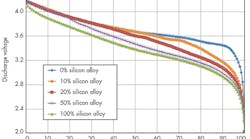Since the first lithium-ion (Li-ion) battery was commercialized by Sony Corp. in the early 1990s, that battery chemistry has become integral to consumer electronics applications. Li-ion batteries hold a number of advantages over nickel-cadmium (NiCd) or nickel-metal-hydride (NiMH) batteries, including high energy density, near zero self-discharge, and no memory effect.
Intense consumer demand for immediate connectivity and instant consumer-directed data (over the Internet) has driven the spread of portable electronics such as smartphones, tablets, GPS systems, and, most recently, wearable electronics to all corners of the world. Li-ion batteries have emerged as the most reliable and advantageous energy source, evidenced by the fact that they’re integrated into nearly every portable consumer electronics gadget.
This file type includes high resolution graphics and schematics when applicable.
Li-ion batteries also play a major role when it comes to renewable energy sources and power generation/transmission due to their high energy density and reliability. Today, the environmental impact of fossil fuels and the looming scarcity of non-renewable energy sources are driving the need for more means of renewable energy. For example, new fuel economy standards and rising fuel costs are transforming the automotive industry. That includes the electrification of vehicles, with major automotive companies such as Toyota, Tesla, BMW, Nissan, General Motors, and others introducing electric models from hybrids to full electric drives.
The power generation and transmission industry are also experiencing major changes, with wind and solar renewable energy sources being added to the grid. The cyclical “on and off” nature of these renewable sources makes energy-storage devices critical to cost-effective management of the energy grid.
However, Li-ion battery performance still needs to improve. Market penetration of electrified vehicles has been low primarily because of high vehicle cost and limited range. Renewable energy applications also require low cost and a battery life of many more years compared to consumer electronics. Reducing the cost per watt-hour and improving cycle life remain key focus areas for the Li-ion battery industry.
Advanced materials development is the key to long-term success. To that end, 3M has technology in its pipeline that could help boost the performance of next-generation batteries and enable the growth of new technology for consumer electronics, vehicle electrification, and grid storage for renewable energy.

